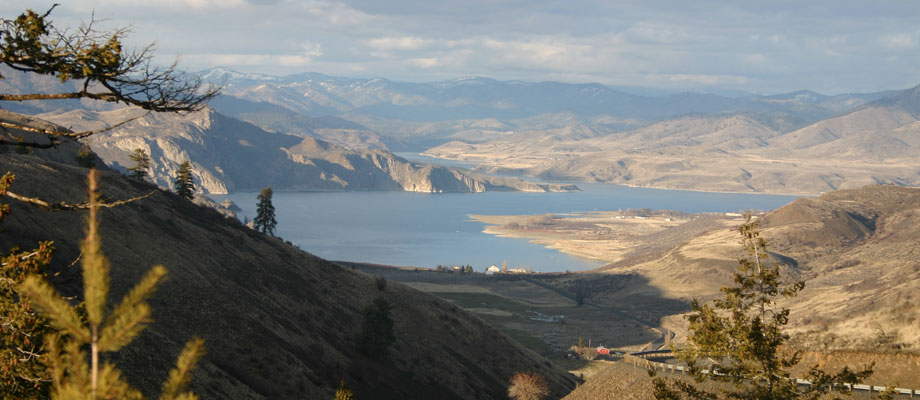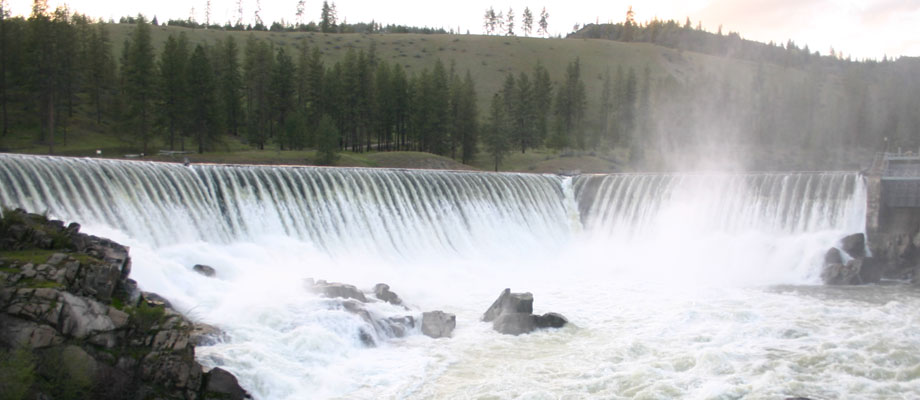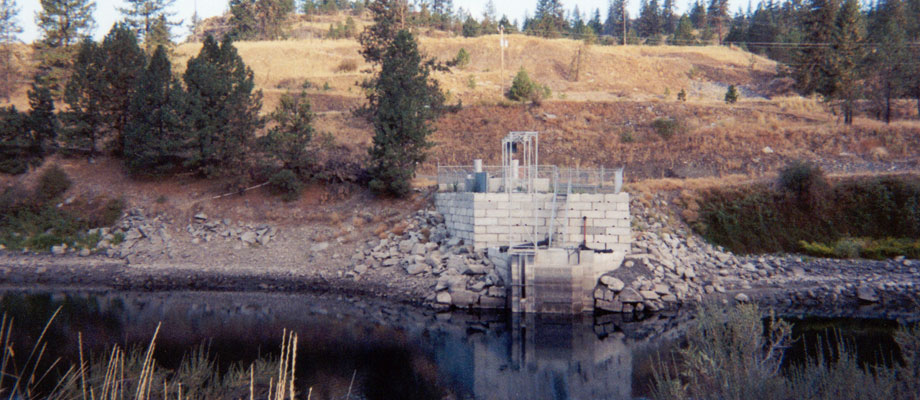The objective of the Lake Roosevelt Fisheries Evaluation Program (LRFEP) is “to protect and restore a robust fishery for Lake Roosevelt”. In this pursuit, the LRFEP monitors fish populations, angler participation, and the limnology and water quality of Lake Roosevelt. Lake Roosevelt is managed by three co-management entities, the Spokane Tribe of Indians (STI), the Colville Confederated Tribes (CCT), and Washington Department of Fish and Wildlife (WDFW). The LRFEP (staffed by the STI) was formed in 1988 to evaluate the success of fishes released by the Lake Roosevelt Artificial Production Program (LRAPP) and the effects of such releases on tribal subsistence and recreational fisheries, and also the resident fish community.
To date, managers have established a successful Rainbow Trout tribal subsistence and recreational fishery. However, the establishment of a kokanee fishery has been meet with difficulty. Studies have found that resident kokanee are impacted by entrainment (loss over the dam), predation (by introduced Walleye and Smallmouth Bass), and early maturation. Early maturation is detrimental, as kokanee are semlaparous (die after spawning). To improve the strength of the kokanee fishery, the LRAPP will begin the culture and release of triploid kokanee in 2014. The triploid fish are expected to not initiate spawning runs and better resist entrainment and predation, therefore better contributing to the tribal subsistence and recreational fishery.
LRFEP biologists conduct annual standardized surveys of the Lake Roosevelt fishery in continuation of long term monitoring objectives. Annual fisheries surveys include usage of boat electrofishing, fyke nets, and beach seining. In addition, the LRFEP oversees fishing derbies and participates in public outreach. LRFEP biologists are currently evaluating the impacts of introduced predators on the Lake Roosevelt fish community, assessing natural young-of-the-year (age-0) production, investigating trends in angler participation and exploitation, and characterizing the impacts of hydro-operations (e.g. draw down depth and timing) on the fisheries.
In particular, the apparent overabundance of resident Walleye is a priority concern, as Walleye can impact forage fish communities and the survival of age-0 fishes (including native redband trout and White Sturgeon), thereby decreasing resident fish diversity. In response, Lake Roosevelt managers elected to open the Spokane Arm to year-round fishing in 2013, as increased angler exploitation of Walleye is expected to alleviate pressure on resident fishes and also increase the overall condition (length to weight ratio) of Walleye, leading to more, larger Walleye and balancing the fish community.
The LRFEP participates in annual Fall Walleye Index Netting (FWIN) surveying of Lake Roosevelt with the CCT and WDFW. The cooperative survey of the resident Walleye population helps describe the condition and abundance of the resident population. Otoliths (ear bones) are collected to evaluate Walleye population age-structure. Currently, resident Walleye demonstrate the slowest growth rates of all FWIN surveyed lakes in Eastern Washington, with a mean length-at-age-3 of 380 mm (15 inches). The decision by Lake Roosevelt co-managers to relax Walleye bag limits and open the Spokane Arm to year-round fishing from 2013 onward is expected to improve the condition of the resident Walleye population by reducing intra-species competition for limited prey resources within the reservoir.



